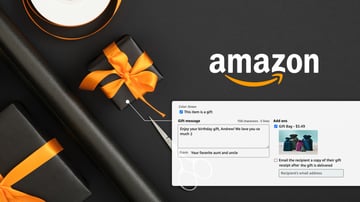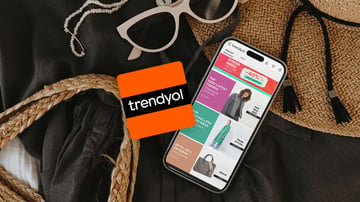Amazon 1P vs 3P: Benefits & challenges of a combined selling approach

There are three major selling models for brands who sell on marketplaces: 1P vs 3P vs hybrid selling.
The first two are the first-party vendor model (1P), and the third-party seller model (3P) — both of which have their own set of pros and cons to consider.
And there’s a third option as well: a hybrid 1P/3P selling model. This is a more flexible solution that allows you to take advantage of both benefits.
And, in addition to these ‘big three’, there are other selling models to consider too. Many marketplaces will be compatible with the same selling models, so while our focus in this article is on Amazon, we can apply the same insight to many other sales platforms too.
But before we offer our recommendations, let’s take a deeper look at the three main types of selling strategies you could employ on Amazon (or other marketplaces).
The 1P Model
By selling 1P on Amazon, your business acts as a wholesaler to the marketplace, which takes on the risk by investing capital in your stock.
Brands that operate this way are commonly known as 1P (first-party) sellers or vendors and deal directly with the marketplace rather than the consumer.
Most brands using the Amazon 1P selling model choose to do so because it takes a lot of work off their hands and they receive the capital up-front in a bulk order. In this situation, they just offer their products to Amazon, which goes on to sell them to the consumer. But there are pros and cons to the 1P model.
What are the pros and cons of being an Amazon 1P seller?
Benefits of being an Amazon 1P seller (and similar marketplaces) include:
Streamlines sales & fulfillment: Since your sales are made directly to Amazon, you can sell in bulk, bypassing many ecommerce operations challenges. This makes fulfillment planning easier as you’re only dealing with one large buyer.
Lowers risk: Selling in larger quantities reduces the stock risk of your business. This reduces your multichannel inventory management burden and frees up capital. This is particularly useful for FMCG products or fashion items (as trends evolve pretty quickly).
Simplifies cross-border expansion: Whether it’s international fees or customs, selling directly to Amazon or your chosen marketplace takes out any extra hassle that comes with cross border ecommerce.
Challenges of selling 1P on Amazon:
However, despite all the benefits, there are several business and growth risks when it comes to adopting an Amazon 1P model:
Low margins: Selling wholesale to Amazon results in lower margins, meaning that most brands will have to sell more products to hit their preferred profit margins (as opposed to selling directly to the consumer in the 3P model).
Loss of control: Since Amazon controls the selling of your products you lose the ability to be flexible to optimize for maximum profit. Amazon doesn't care about this, so you might end up with some SKUs that don't shift as quickly as you'd like, or for the margins you would like.
Let’s explore this better with an example. Here’s a Burberry perfume on its website. The photography is sharp, and the description is highly detailed, aligning with the identity you'd likely associate with a luxury brand. Meanwhile, the same product on Amazon is almost unrecognizable in comparison. The brand name is in capitals, the image and pricing are different, and there is no product description.
Burberry’s perfume on their own website
Burberry’s perfume on Amazon
Once you’re invited to sell to Amazon, you can view and manage information about your products. While you can’t control prices anymore, you can update and add to the product listings to help consumers make better purchase decisions. ChannelEngine's Amazon Vendor channel makes this a streamlined process, helping you to optimize listings while avoiding error messages.
In addition, you can run promotions and advertisements to attract more consumers to your products, which will increase Amazon’s sales, making them buy more from you and giving you leverage when negotiating your next annual terms with them.
This is a cooperative agreement, but it’s important to know that Amazon will collect fees for any chargebacks, return issues, etc.
Latest updates to Amazon Vendor Central
Amazon Vendor Central (AVC) is the platform for Amazon 1P sellers, however this is undergoing some changes. Some are even calling it a ‘purge’.
So, what’s happening with Vendor Central?
The answer is simple: Amazon is de-risking their business by progressively cherry-picking the best brands’ products and discarding the rest. This will affect smaller brands the most, as they will struggle to meet volume requirements.
New brands are less likely to be invited to the AVC program, and well-established brands are likely to see their ‘accepted’ product range shrink over time.
New products may fail to gain Amazon’s interest and older products with decreasing sales velocity are likely to be dropped. These changes have been underway for a while, and it’s more of a gentle push towards Seller Central and the 3P model than a hard shove away from 1P. But this isn’t necessarily bad news.
Being a 1P seller incurs significant fees, and you may make better margins as a 3P or 2P seller instead. Without your hands tied by vendor agreements, you’re free to explore the true potential of marketplace selling for your brand. And you can still simplify your selling model by leveraging Fulfillment by Amazon (FBA) if you choose.
Selling 3P on Amazon
The 3P (third-party) selling model allows your business to retain its status as the retailer, offering greater control over your Amazon presence. It is worth noting this does naturally translate to a heavier workload.
In this case, you’d be an Amazon seller (as opposed to an Amazon vendor), which means you’d have more control over your products and your selling strategy. Let’s take a closer look at some of the benefits of adopting this selling strategy.
Benefits of the selling 3P on Amazon (or similar marketplaces):
1. Sell directly to customers on marketplaces: The first and most obvious benefit is that your brand now has full control over its presentation and distribution. This means you can control how to entice and attract consumers across different funnel stages.
2. Flexible fulfillment options: Just because you don’t sell to Amazon doesn’t mean that you can’t take advantage of its fulfillment options. When you sell in a 3P (B2C) model, you can decide how to fulfill and ship your products according to what works best for your brand. For example, you can choose Fulfilment by Amazon (FBA), Fulfilment by Merchant (FBM), or in the case of advanced FBM sellers, Seller Fulfilled Prime (SFP).
3. Control over prices: When you own your stock, you can choose to price your products however you want in order to meet sales or profit targets. You also have more flexibility to adjust your prices easier
4. Sell with your own tools & software: You can integrate software that boosts your revenue into your Seller account. For example, brands that sell D2C or have a 3P relationship with Amazon, can use ChannelEngine’s repricer to create dynamic pricing rules to factor in shipping costs, different marketplace fees, and scheduled discounts. This also provides in-depth competitor insights and is invaluable in maximizing profits with reduced competition. Another useful tool in your brand’s arsenal when selling as a third-party seller on Amazon is to create unique virtual bundles to stave off competition and attract consumers with better, cost-effective offers.
5. Protect your margin: Since you have a direct connection with your buyers, your brand can utilize this to offer great customer experiences. From packaging to clear information in product descriptions, you can control your consumers’ experience interacting with your product in several ways.
Challenges of selling 3P on Amazon
Time consuming operational work: The most obvious drawback of the 3P seller model is the work that goes into selling directly to consumers, which can be incredibly time-consuming. Sellers are also subject to several marketplace fees, such as referral fees, variable FBA costs, etc. On top of that, you are responsible for your advertising, which brings added overhead costs and requires time and skills to operate effectively.
Uncertainty on sales volumes and revenue: Although you will make a greater margin on your products by selling directly to the consumer, you won't know exactly how many items you'll sell at the start of the year and you won't receive the revenue up-front. Some businesses would rather forfeit this revenue to receive the sales up-front.
Amazon 1P vs 3P: In summary
In simple terms, the 1P model means that Amazon takes on the business risk and dictates the terms of sale. In this arrangement you are a wholesaler, charging wholesale prices. This is quite different from the 3P model in which you are the retailer who must manage all aspects of the selling process. With 3P Amazon simply provides a platform and a set of services that you are responsible for orchestrating.
How do I become an Amazon 1P or 3P seller?
You need to be invited to become an Amazon 1P seller, and there are several steps involved after this. Your products will be assessed by the Amazon merchandising team, and Amazon will send a purchase order (PO) for the products they want. You’ll need to prove your ownership of the brand with appropriate trademarks, and your products will need to meet sales volume requirements to avoid being dropped by Amazon’s merchandisers.
By comparison, becoming a 3P seller is much more straightforward. There’s no invitation needed, and you can become a 3P merchant on Amazon through a simple application process. Then, you can use your own fulfillment solution or use FBA.
The question arises: 1P vs 3P - which is the best one for your business?
Well, hang on a moment - what if you don’t have to choose at all?
There are other ways to combine the benefits of both the seller and vendor models into a single strategy.
Another option: A hybrid 1P/3P selling model
Employing a hybrid selling model when it comes to selling on marketplaces allows you to act simultaneously as a vendor and a seller. This is ideal if you’re already a 1P vendor on Amazon and want to add resilience to your business. It means you can take advantage of both 1P and 3P selling and move between them with agility when needed.
Let’s clarify this with an example:
Now, instead of letting the last quarter of your stock go to waste or lying waiting in your warehouse (taking up precious space and costing money), you can choose to sell it as a 3P seller on Amazon itself. From offering discounts to the aforementioned unique virtual bundles, you can ensure your remaining inventory sells smoothly directly on Amazon (or your chosen marketplace).
Given how frequently Amazon, Bol, and other online marketplaces change their algorithms and product priorities, the flexibility a hybrid 1P & 3P selling model affords businesses can be vital to their growth and profitability.
And there are other selling models to consider as well.
Other selling models for marketplace selling
2P + Fulfilled by Amazon (FBA)
The 2P model is the name given to a 3P seller leveraging Fulfillment by Amazon (FBA) to fulfill orders. This also takes a lot of the burden from customer service and returns management, as this can be largely handled by Amazon.
3P unmanaged
Unlike 3P in combination with FBA (a.k.a., 2P), unmanaged 3P selling means you take on the full responsibility of managing sales and fulfillment yourself. This is an added burden, but it comes with all the rewards of full control and margins you dictate. To make this succeed, you must be able to fulfill orders rapidly, use reliable logistics providers, and offer first-class customer service.
3P partnership
This model is based on a partnership with a carefully selected ecommerce seller. The partner seller acts as your ‘authorized dealer’ and ecommerce manager, taking on responsibility for product listings, warehousing, order processing, fulfillment, and customer service. This can be very profitable if a good brand alignment can be found.
3P network
This is a bigger version of the 3P partnership model above, using multiple authorized partners instead of just one exclusive arrangement. Each partner takes on the same responsibilities as the single partnership model - but doesn’t have an exclusive deal. You’ll need to clarify policies on pricing and promotions to avoid channel conflicts, but this model can help you to achieve a wider reach across more regions.
Got questions?
If you’d like to know more about adopting a hybrid 1P/3P selling model, reach out to us here!




